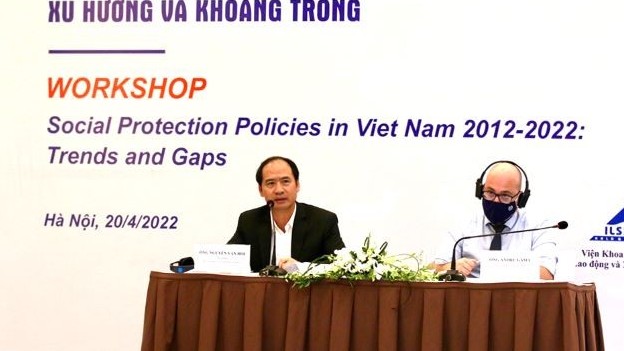
Social insurance coverage remains very low in Vietnam
Latest
| Ministry drafts Decree on compulsory social insurance for foreign workers in VN |
A survey commissioned by the Ministry of Labour, Invalids and Social Affairs found that only 23 percent of the nation’s labour force receiving any social insurance coverage in 2015, with the figure for salaried workers also a low 58 percent.
The survey results were presented at a conference held recently in Hanoi by the Ministry of Labour, Invalids and Social Affairs and the International Labour Organisation.
 |
| Healthcare at a hospital in Nam Dinh province (Photo: VNA) |
The survey showed that the social insurance coverage rate in some sectors was very low. In the construction sector, for instance, just 6 percent of salaried workers were covered, while 20 percent received coverage in the furniture and bamboo craft sector.
Paulette Casttel, an expert working with International Labour Organisation in Vietnam, said that although the social security system had been opened to private sector workers for more than 20 years, the share of retired people from the private sector in the total number of old-age pensioners was growing very slowly. According to her, the rate of participants in voluntary social insurance scheme in Vietnam remained low, while there was a high incidence of early withdrawal when employees retired or left.
Regarding low social insurance coverage in the construction and bamboo sectors, she stated a research showed that these sectors tended to use a lot of temporary workers hired by verbal agreement or provide day-to-day work, while only keep a small core of permanent workers. In the companies’ view, only the permanent employees were entitled to labour contracts and social security coverage, she added. And even among the workers, it had been seen that there was a strong preference for short-term income gains than social benefits, she added.
Nguyen Thi Dieu Hong, a social security consultant, said that lack of “interconnections” between compulsory and voluntary social insurance schemes, as well as schemes within the social protection system were key reasons for the low rate of social insurance coverage in Vietnam.
Weak enforcement of the Law on Social Insurance, as well as little compliance by businesses also led to high social insurance payment debt, particularly among non-State companies, she said. Low awareness among workers about the meaning and benefits of social insurance also kept them outside the system.
As a result, Mrs. Hong suggested that authorities should encourage the people’s ability to self-guarantee social protection by developing a multi-tier social insurance system with links between compulsory and voluntary social insurance. The system should be funded and developed with citizens’ contributions, the State’s supports and guarantees. She also stressed the necessity to raise the awareness and importance of social protection policies in general and social insurance policies.
In addition to that, Mrs. Hong suggested the establishment of an enterprise satisfaction index on social insurance administrative procedures and for studies to be conducted on limitations in social insurance participation of various stakeholders. According to her, this would enable evidence-based adjustments to legislation and statutory documents.
Besides, Mr. Casttel of the ILO recommended that authorities co-operate with trade unions and business associations to increase workers’ awareness about social rights (fringe benefits, paid holidays, etc.), including social security; rights and obligations. She believed this would reduce fear and anxiety among workers and increase their interest in social insurance schemes.
At last, Mrs. Hong insisted that in order to reduce fears of non-compliant competitors, it was necessary to organise compliance drives on geographical basis and target specific sectors and co-ordinate the actions with employers’ organisations. For enterprises that are not registered, a transitional period can be allowed for small firms to join social security schemes. Small firms should also be supported to join with access to credit and relevant training, etc, she added.
Vietnam has set a target of having half its labour force covered by social insurance by 2020.
 | Vietnam becomes global destination thanks to ASEAN integration Vietnam has become a spotlight in the global tourism map thanks to the country’s extensive and intensive integration in the Association of Southeast Asian Nations ... |
 | Israel willing to share start-up experience with Vietnam Ambassador of Israel to Vietnam Meirav Eilon Shahar has stated that Israel, as a start-up nation, is willing to share their experiences as well as ... |
 | Vietnam explores cultural-religious heritage tourism Vietnam holds huge potential for cultural and spiritual tourism thanks to its diversity in terms of culture, customs and traditions, which have been shaped and ... |





















